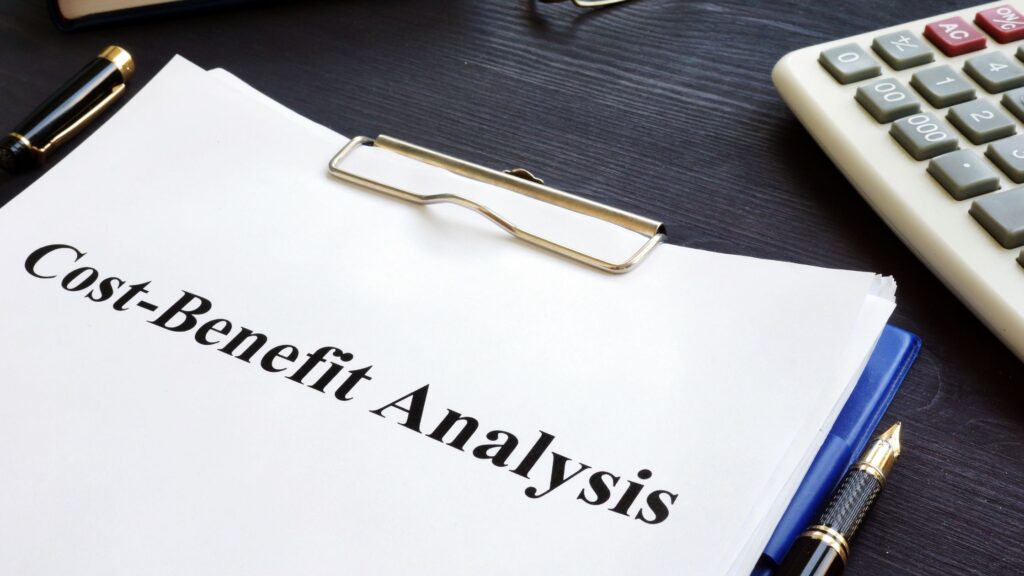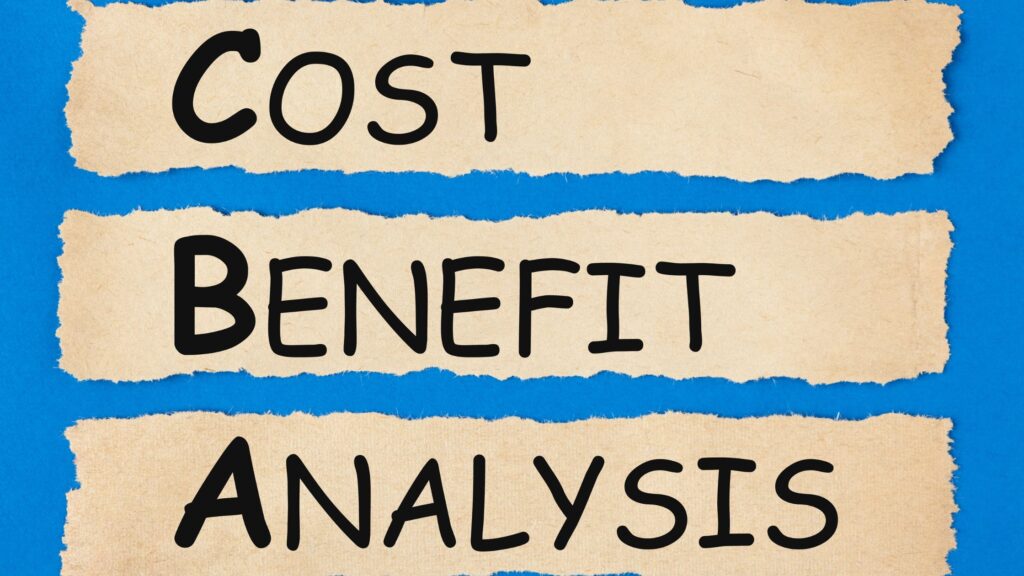In today’s competitive and fast-moving business landscape, every strategic decision—whether it’s adopting new technology, expanding into new markets, or launching a product—carries both potential gains and risks. Making these decisions without measurable evaluation can lead to wasted investments. That’s where a cost-benefit analysis (CBA) proves invaluable.
Understanding the benefits of CBA allows organizations to evaluate opportunities systematically, make informed decisions, and maximize long-term profitability.

Table of Contents
ToggleWhat Is Cost-Benefit Analysis (CBA)?
Cost-benefit analysis (CBA) is a method that compares the total expected costs against the total expected benefits of one or more actions or projects. In simple terms, it helps decision-makers assess whether a course of action is worthwhile.
By quantifying both tangible and intangible factors, CBA helps you choose options that maximize net benefit.
Top Benefits of CBA
A Cost–Benefit Analysis (CBA) is more than just a financial comparison—it’s a structured decision-making framework that strengthens business judgment and transparency.
1) Informed Decision-Making
By listing costs and benefits side by side, you can compare alternatives more concretely. You reduce reliance on gut feel or guesswork.
2) Clarity on Trade-offs
Every option has downsides. A CBA forces you to account for negative consequences—hidden costs, opportunity costs, unintended effects—in clear terms.
3) Prioritization of Projects
When resources are limited, CBA helps prioritize initiatives that deliver the highest net benefit per resource unit (time, capital, manpower).
4) Better Risk Assessment
CBA encourages sensitivity analysis, such as best and worst cases. This process reveals how robust a decision is under changing assumptions.
5) Accountability and Transparency
When managers lay out assumptions, cost forecasts, and benefit estimates, stakeholders can follow their logic. That builds trust and aids communication.
6) Strategic Alignment
CBA ensures that projects align with company goals. It tests whether a proposed initiative advances growth, profitability, or operational efficiency.
7) Ongoing Evaluation
You can revisit and track actual costs versus predicted benefits. That feedback loop improves planning over time.
In essence, a well-executed Cost–Benefit Analysis helps organizations make smarter, data-driven decisions while maintaining clarity, accountability, and strategic focus.

How to Conduct a Reliable Cost-Benefit Analysis
Conducting a Cost–Benefit Analysis (CBA) requires discipline, structure, and attention to detail. Each step ensures that decisions are grounded in data and aligned with organizational priorities.
- Define the scope: Specify which costs and benefits to include and over what timeframe.
- List all costs and benefits: Include direct, indirect, recurring, one-time, and intangible factors.
- Quantify them in monetary terms (where possible): Use market data or benchmarks to convert qualitative factors into financial terms.
- Discount future value: Use discounting if the project spans multiple years to reflect present value.
- Perform sensitivity analysis: Vary key assumptions such as cost, volume, or price to test robustness.
- Compute net benefit: Subtract total costs from total benefits or calculate a benefit–cost ratio.
- Review qualitative factors: Some benefits or risks won’t fully convert to money, such as reputation or compliance.
- Make recommendations and monitor: Decide on the project, then compare actual outcomes against forecasts.
In summary, a structured Cost–Benefit Analysis blends financial precision with strategic insight, enabling organizations to make balanced, evidence-based decisions that support long-term value creation. Learn more about Accounting Service Cost for Small Business.
Applying CBA in Practice
Imagine a mid-sized e-commerce business considering investment in an advanced inventory system.
- Costs: software license, setup, training, and integration
- Benefits: fewer stockouts, reduced overstock, better forecasting, and improved customer satisfaction
By running a cost-benefit analysis, the business might discover that over three years, the system yields a net gain of $150,000 with an initial investment of $50,000. Even if benefits drop by 20%, the project remains profitable.
This clarity allows leaders to proceed confidently, knowing the decision rests on data rather than assumption.
Practical Recommendations for Firms Conducting CBA
To strengthen the accuracy and credibility of any CBA process:
- Use scenario planning (best, base, and worst cases) to assess the range of possible outcomes.
- Update assumptions regularly as market conditions change or new information emerges.
- Involve cross-functional teams to capture insights and hidden costs across departments.
- Use automated templates or dashboards to maintain consistency and simplify reporting.
- Present results visually using charts and graphs for better comprehension.
- Combine CBA with other tools, such as SWOT analysis, to add strategic depth.
- Document assumptions clearly to ensure transparency and accountability.
These steps not only make your CBA more accurate but also transform it into a valuable tool for continuous business improvement.
Conclusion
The benefits of CBA make it an indispensable tool for sound business decisions. When organizations apply a well-structured cost-benefit analysis, they gain clarity, align choices with strategy, and mitigate risks effectively. For businesses that value strategic growth and precise financial planning, integrating CBA into their workflow can make every decision count.
Freedomfolio emphasizes data-driven approaches and financial intelligence—making them ideal partners for organizations seeking measurable, confident growth.

Frequently Asked Questions
Q1: What are the limitations of cost-benefit analysis?
A: CBA can struggle with valuing intangible benefits such as reputation or morale. It also depends heavily on accurate assumptions, so poor data can distort results.
Q2: When should a company not use CBA?
A: When the costs or benefits are too uncertain or hard to measure, or when decisions depend on ethical, legal, or social priorities rather than monetary outcomes.
Q3: How often should you update a cost-benefit analysis?
A: You should revisit it whenever market or internal conditions change significantly, or at least once a year for ongoing projects.
Q4: Can small businesses benefit from performing a CBA?
A: Absolutely. Even small businesses can use simplified CBAs to evaluate hiring, marketing, or equipment investments, leading to smarter financial decisions.




